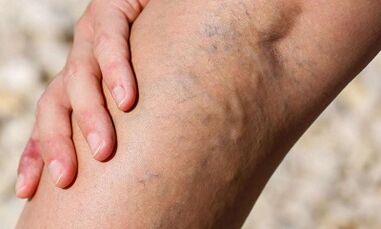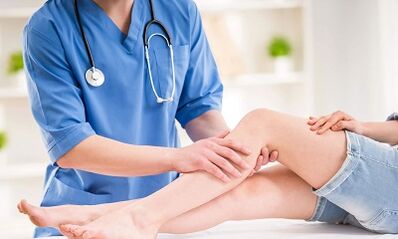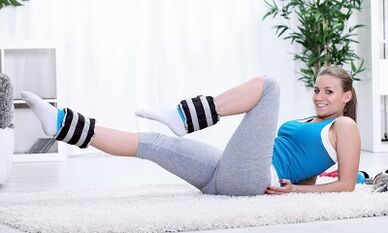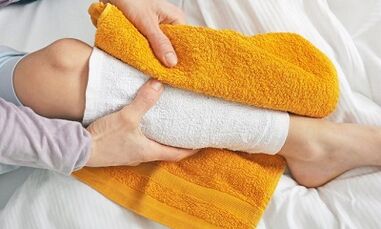
Varicose veins are a fairly common pathological condition, which is characterized by an increase in the diameter of the lumen, thinning of the vein walls and the appearance of “nodes”.
Translated from ancient Greek, "varicose veins" means "swelling."Theoretically, the disease can appear anywhere on the body, but the most common lesions are in the legs.
the nature of the problem
Veins in the body play a very important role, representing a network of branched reservoirs that carry blood from tissues to the heart muscle.In the lower extremities, this network is expressed in the form of deep and superficial veins, interconnected by an emergency blood discharge system.
Typically, the main focus is on the deep veins, so they are significantly stronger and more voluminous.About 15% of the total workload remains on the surface.
The heart is a "pump" that drives blood through the veins.Some blood flows through the veins against gravity (when walking, moving, or squatting).When the muscles are relaxed (while standing), blood flows downward under the influence of the same gravity.But it's not that simple; a valve located on the wall of the container does not allow it to flow back.
If the valve "ruptures," the vein becomes dilated and inflamed, and is then unable to keep blood flowing.This process causes the vein to swell and bulge.Impaired blood supply becomes the source of varicose veins in the legs.
Causes of varicose veins
There are many reasons for this:
- Varicose veins are most likely hereditary, meaning there is a congenital weakness in the walls of the blood vessels.
- The occurrence of varicose veins may be related to people's daily activities and immunity.
One thing is for sure, the disease does not occur on its own, there must be something driving it.
During sedentary work, blood stagnates in the veins, or rather in the pelvis, which subsequently leads to health problems.Varicose veins are caused by a sedentary lifestyle, so even standing at work does not hinder their development.
It is not without reason that this disease is primarily known as an occupational disease of sellers and hairdressers.
Notable provocateurs also include:
- Being overweight (obesity),
- Lift weights regularly,
- Leg injury.
Another factor is increased intra-abdominal pressure.The size of the veins constantly changes, narrowing when you inhale, narrowing when you exhale, and dilate when you exhale.When a person pushes hard, the veins are put under tremendous pressure and begin to expand under the pressure created.
Of course, this doesn't mean absolutely everyone is at risk, but chronic constipation and coughing can lead to varicose veins.
Varicose veins during pregnancy

Pregnant women often develop varicose veins.The growing uterus involuntarily puts pressure on the veins coming from the legs.In this case, nature protects women from serious consequences and gives the body during pregnancy a sufficient amount of sex hormones that make the walls of blood vessels plastic and flexible.Generally speaking, the disease here is reversible.After delivery, the veins return to their previous state.
prevention methods
Absolutely any disease is much easier to prevent than cure, and varicose veins are no exception.Let’s look at the main preventive measures:
- Forget about tight and uncomfortable shoes.Women should remember that "everyday" heel height should not exceed five centimeters.At night, give your feet a massage and a cold bath, then elevate your feet and stay in this position for 15 minutes.
- Wear loose-fitting clothing without tight elastics or waistbands.
- If possible, walk barefoot on cobblestones.At least, treat yourself to this during the holidays.
- Control your diet.Eliminate or at least reduce your intake of spicy, salty and smoked foods.The same goes for alcohol.
- The best way to prevent varicose veins is exercise.The initial stages of the disease may be an exception.If you notice the first signs and symptoms, the load should be light and be sure to consult a doctor before starting training.
- If your job requires you to sit for long periods of time, try to stand up and move around the room as often as possible.Do some basic exercises and jump at least a little.Don't cross your legs when sitting, as this is very detrimental to blood circulation.
- Don't overdo bathing, saunas, and hot tubs.After the "hot" procedure, be sure to rinse with cold water.
Stages of development of varicose veins
- First stage.There was no pain or discomfort and only cosmetic defects were observed.Branching patterns of veins appear on the legs, with "stars" and "networks" appearing.By night my legs were swollen a lot.
- Second stage.There was significant swelling in the ankles and severe heaviness in the legs.At night, cramping, numbness, pins and needles, and tingling may occur.
- Third stage.There was persistent severe swelling of the legs, skin compaction, local pigmentation changes, itching and dermatitis.
- Fourth stage.Nutritional ulcers appear on the skin of the legs.
What measures should be taken initially

Varicose veins of the lower limbs respond well to treatment if they are in infancy; a vigorous "battle" is likely to prevent their development.
First, follow all the precautions mentioned above.Go through your wardrobe and, if necessary, eliminate anything "bad" and do the same with your shoes.Give your feet contrast showers, walk barefoot more often and eat a balanced diet.
Second, at the first symptoms, invest in compression garments, either tights or stockings.They work by dispersing pressure along the legs, thus normalizing blood circulation and significantly reducing symptoms.
As for consultation, you need to visit not only a phlebologist, but also a gynecologist (for women) and an orthopedist.Hormonal birth control pills or flat feet may cause circulatory problems.
Preventing varicose veins during pregnancy
Almost every woman faces leg swelling and circulation problems during pregnancy.The enlarging uterus constantly puts pressure on the inferior vena cava, preventing its normal function.
However, as mentioned above, varicose veins in this condition are reversible.The main thing is to take necessary preventive measures in time.
- Invest in comfortable orthopedic shoes so your feet won't tire when you walk.
- Take daily walks. Don’t sit or stand for long periods of time.To prevent venous stagnation, rest with your feet on a hill.
- To prevent swelling, wear tight clothing.
- Mild physical activity involving only the legs can be of great help.The simplest movement of the feet in different directions is enough.
- Vitamin C is very effective in preventing varicose veins.It has many beneficial properties that can give elasticity to veins while reducing the risk of many diseases.
Treatment of varicose veins
Complete relief from the disease can only be achieved through surgery.Medications and physical exercise are used as adjuncts.
phlebectomy
The surgery can be surgical or using the latest technology.The first is phlebectomy, the removal of varicose veins.
laser
The second group is laser coagulation; there are no incisions; heat radiation is applied to problem areas of the body.
Sclerotherapy
Another way to get rid of varicose veins is sclerotherapy.A special solution is injected into the damaged vein using a fine needle, which adheres to the vessel wall and subsequently dissolves it.
But no matter how hard doctors try, they simply can't eliminate the main cause of varicose veins - the fragility of the blood vessel walls.Only you have the power to prevent disease through preventive measures.
Special exercises

Below we’ll list some physical exercises that won’t take you a lot of time but will have significant results.You can do it at home.
- Exercise 1.Lie on the floor, raise your legs until they form a 90° angle with the floor, and begin to move your toes "from yourself to yourself."Repeat 10 times.
- Exercise 2.Lie on your back, lift your legs, and "draw" circles with your feet, 10 times in each direction.
- Exercise 3.The familiar "white birch tree" has a very good effect.Lie on your back, lift your legs and pelvis, and rest your pelvis on your hands.Lock the position for a few seconds.Repeat 4 times.
- hint:take some time to stretch. First, your body will remain flexible throughout, and second, this will help drain blood from your veins.
- Exercise 4.Lie on the floor with your feet together and your knees pointing in different directions.Grab your feet and pull them towards you. Stay in this position for a while. Repeat the exercise 4 times.
- Exercise 5.Lie on your left side, resting your elbows on the ground and grabbing your right foot with your right hand.Spring your hips back a few times (try bringing your heels into your hips) and hold for 10 seconds.Do similar manipulations with the left side.
ointment
The goal of medication to treat varicose veins is to make the veins elastic and normal.Specialists will recommend the medications needed for complex treatments.
Creams containing anticoagulants can be a good preventative.The latter works by relieving pain in the affected area and strengthening blood vessels.As a rule, anti-varicose vein creams contain a variety of vitamins: C, B5 and B1, so the regeneration time is significantly shortened.
Tablets that are also common in treatment are:
- Improve blood vessel tone;
- relieve the inflammatory process;
- accelerate blood and lymph flow;
- Eliminate microcirculatory disorders.
Tablet drugs are divided into several categories: corticosteroids, intravenous drugs, antithrombotic drugs and nonsteroidal analgesics.
folk remedies

Conservative treatment methods are effective in the first stages of varicose veins, when patients feel heaviness in their legs and notice the network of veins on their skin.The sooner you take steps to eliminate the problem, the faster and more accurate the results will be.Here are some simple but effective recipes.
garlic compress
Make a paste of grated garlic and butter in a ratio of 1:2 and apply it to the affected area and secure it with paper and a bandage.Exposure is overnight; in the morning, rinse feet with warm water.
chestnut
Take chestnut tincture internally.Pour 500 ml of alcohol into 50 grams of dry product.The resulting product must be infused for 14 days and filtered.Take it three times a day with water before meals.
Ointment based on Kalanchoe flower
A one-liter jar must be filled half way with leaves and the rest with 70% alcohol.The resulting tincture should be kept in a dark place for two weeks, but shaken daily.Apply the prepared ointment to the affected area every day.
Love yourself and stay healthy!

















